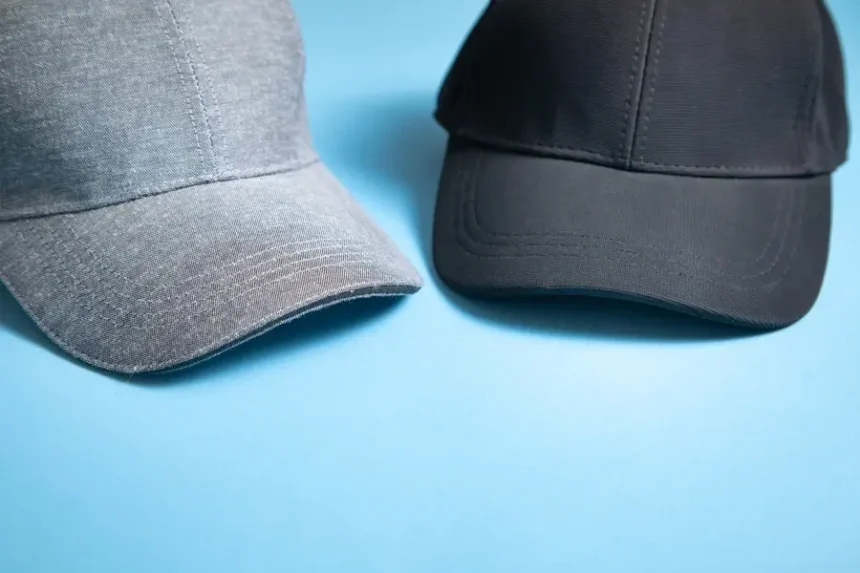Baseball caps are more than just headwear—they’re fashion statements, promotional tools, and daily essentials for millions of people around the world. Whether you’re heading to a baseball game, going out for a casual day, or looking to top off a stylish outfit, the material of a baseball cap plays a vital role in its comfort, durability, and performance.
Suppose you’re shopping for quality caps or looking to understand the materials used before making a purchase. In that case, jointophat.com is a go-to destination, offering a wide range of baseball caps made from different premium materials. In this guide, we will explore the various materials used in making baseball caps and what makes each of them unique.
Introduction to Baseball Cap Materials
Baseball caps may look similar at first glance, but a deeper look reveals the diversity in materials, structure, and function. The choice of material not only affects how the cap looks and feels but also its performance in various weather conditions.
At jointophat.com, customers can explore a variety of cap styles made from high-quality fabrics, ranging from breathable cotton to modern blends designed for sports and streetwear. Understanding these materials enables buyers to make informed decisions based on climate, usage, and personal preferences.
Why Material Matters in Baseball Caps
Comfort and Fit
The fabric of a cap affects how it sits on your head, the amount of ventilation it offers, and its overall comfort during extended wear.
Breathability
Breathable materials allow air to circulate, keeping your head cool, especially in hot or humid climates.
Aesthetic Appeal
Different materials lend themselves to different textures, colors, and finishes—some are glossy and sleek, while others are rugged and matte.
Weather Resistance
If you plan to wear your cap outdoors, weather resistance (to rain, UV rays, etc.) becomes a significant consideration.
Common Materials Used in Baseball Caps
1. Cotton
Cotton is one of the most common and beloved materials for baseball caps. It’s soft, breathable, and offers a natural feel against the skin.
Pros
- Hypoallergenic
- Breathable and moisture-absorbent
- Easy to clean
Cons
- Can shrink if not pre-shrunk
- May fade with prolonged sun exposure
Best For: Casual everyday use, hot climates, sensitive skin
2. Polyester
Polyester is a synthetic fabric known for its durability and moisture-wicking properties. Many modern performance caps use polyester blends.
Pros
- Durable and fade-resistant
- Quick-drying and moisture-wicking
- Holds shape well
Cons
- Less breathable than cotton
- Can retain odors if not washed properly
Best For: Sports, outdoor activities, rainy or humid environments
3. Wool
Wool was traditionally used in baseball caps, especially those worn by professional players in the early days of the sport.
Pros
- Warm and insulating
- Natural elasticity
- Rich texture and classic look
Cons
- Not ideal for hot weather
- Requires special cleaning (often dry-clean only)
Best For: Cooler weather, vintage styles, classic fans
4. Nylon
Nylon is a lightweight, flexible material often used in caps designed for hiking or other outdoor activities.
Pros
- Lightweight and packable
- Water-resistant
- Long-lasting
Cons
- May feel plasticky
- It is less natural in appearance compared to cotton or wool
Best For: Outdoor enthusiasts, travel, hiking
5. Blends (Poly-Cotton, Cotton-Spandex, etc.)
Blended materials combine the best of different fibers to improve fit, flexibility, or durability.
Pros
- Balanced performance
- Better stretch and shape retention
- Often more affordable
Cons
- May sacrifice breathability or softness
- Care instructions can vary
Best For: Everyday wear, versatile usage
Specialty and Performance-Based Fabrics
Mesh Panels (Often Polyester or Nylon)
Used in trucker hats or breathable cap designs, mesh improves ventilation.
Moisture-Wicking Liners
Found in athletic caps, these keep sweat away from the forehead and scalp.
UV-Resistant Materials
Caps made with UPF-rated fabrics provide extra sun protection.
Natural vs. Synthetic: Pros and Cons
Feature Natural Materials (Cotton, Wool) Synthetic Materials (Polyester, Nylon)
Breathability High Medium
Durability Medium High
Moisture-Wicking Low High
Comfort High Medium
Sustainability More eco-friendly Less eco-friendly
Cost Often higher Generally lower
Choosing the Right Cap Material for Your Needs
For Athletes and Fitness Enthusiasts
Opt for polyester or poly-cotton blends that feature sweat-wicking properties and ventilation.
For Casual Streetwear
Cotton or cotton blends provide a comfortable fit and a classic appearance, making them ideal for everyday use.
For Outdoor Adventures
Look for nylon or water-resistant materials, especially if you’re hiking, camping, or exposed to the elements.
For Cold Weather
Wool caps or fleece-lined versions provide extra warmth during chilly months.
You can explore these variations at jointophat.com, where caps are categorized by purpose, material, and season.
How Material Affects Cap Maintenance and Durability
Washing Instructions
- Cotton: Machine washable but may shrink
- Polyester: Machine washable, quick-drying
- Wool: Often requires hand-washing or dry-cleaning
- Blends: Check labels; some may need gentle cycles
Storage Tips
Store caps in a cool, dry place away from direct sunlight to prevent fading and material breakdown.
Innovations in Baseball Cap Materials
Recycled Materials
Many brands are now producing eco-friendly caps using recycled plastic bottles or upcycled fabrics.
Antimicrobial Fabrics
Some athletic caps now feature anti-odor and bacteria-resistant materials to stay fresh longer.
Temperature-Regulating Fabrics
Advanced textiles that adjust to body heat or outside temperature are increasingly used in premium sports caps.
jointophat.com is among the platforms exploring these innovative trends, offering stylish yet functional headwear for the modern user.
Final Thoughts
The material of a baseball cap is more than just fabric—it’s a key factor that defines comfort, functionality, style, and performance. From soft and breathable cotton to high-performance polyester blends, each material serves a different purpose. Choosing the right one depends on your lifestyle, climate, and fashion preference.
Whether you’re shopping for sportswear, casual gear, or fashion-forward caps, jointophat.com offers a curated selection that combines high-quality materials with modern design. Explore their catalog to find the perfect cap for every season and occasion.
FAQs
1. What is the most breathable material for a baseball cap?
Cotton is generally the most breathable material, ideal for hot and humid conditions.
2. Are polyester caps good for sweating?
Yes, polyester caps wick away moisture and dry quickly, making them great for sports and exercise.
3. Which material lasts the longest?
Polyester and nylon caps have the highest durability due to their resistance to wear and tear.
4. Is wool still used in baseball caps?
Yes, especially in traditional or vintage-style caps designed for cooler weather.
5. Where can I find caps made from different materials?
You can visit jointophat.com to explore a wide range of caps in various materials suited for different styles and purposes.
Related Posts
Revolutionizing Digital Education with Classroomus.85: A Definitive Resource for Success
The Definitive Guide to MyLawyer360: Revolutionizing Access to Legal Services





